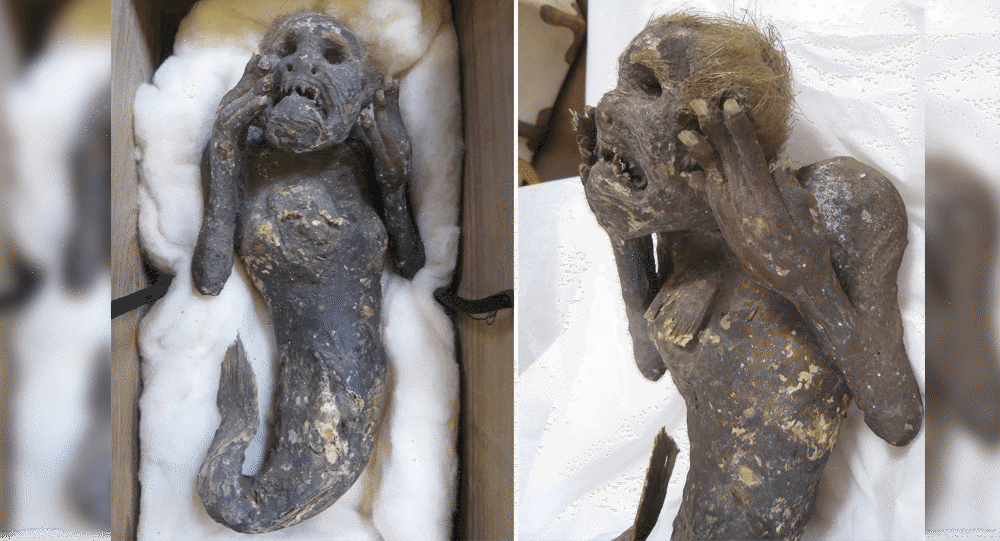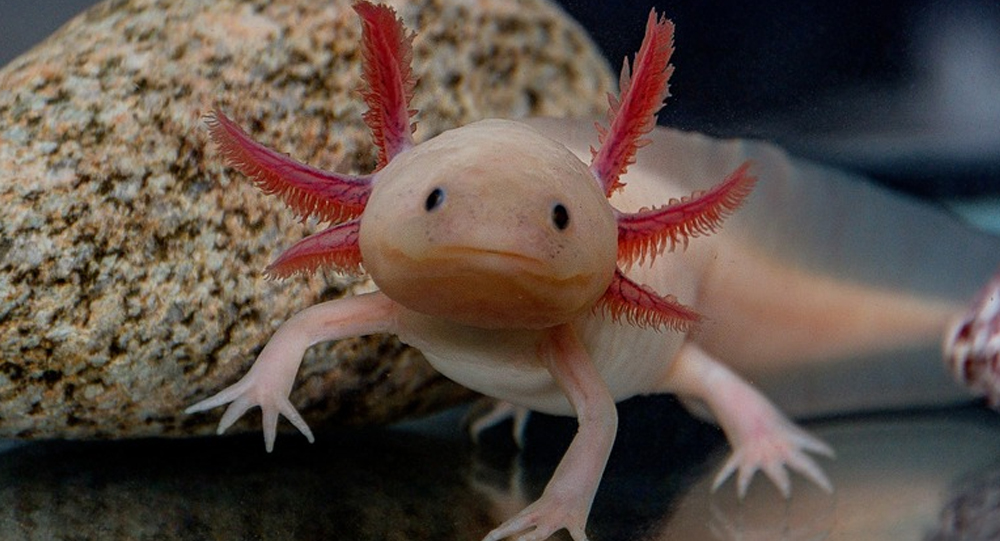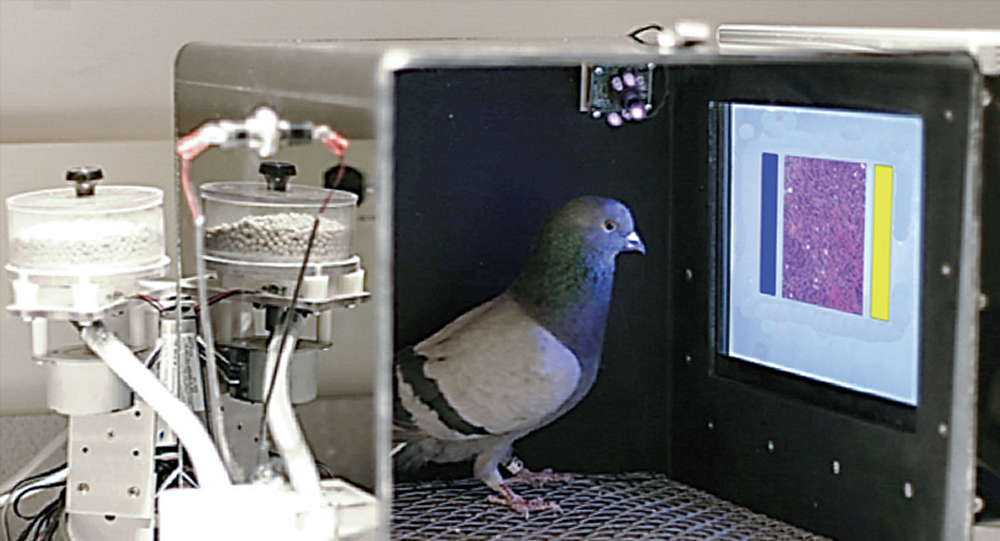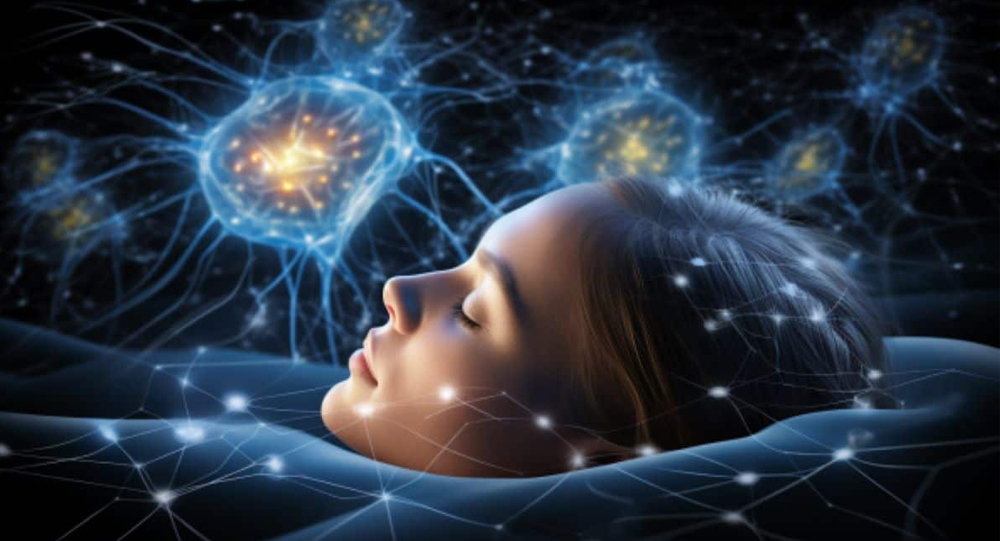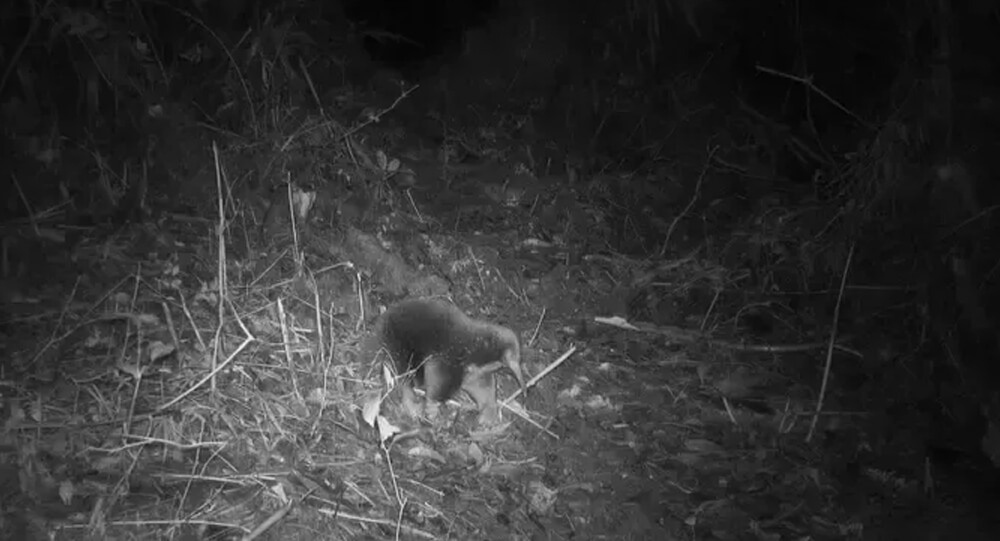

For the First Time in 60 Years, Scientists Discover a 'Lost' Echidna Species
An elusive species of echidna in the wild has been photographed for the first time by an expedition team investigating Indonesia’s Cyclops Mountains. Some researchers worry that the species may have become extinct because the last confirmed sighting of it was more than 60 years ago.
However, the team maintained optimism throughout their four-week expedition, supported by local reports suggesting the species might still be around. The Attenborough’s long-beaked echidna, named for renowned broadcaster and naturalist David Attenborough, was caught on the final day of their expedition.
According to James Kempton, a biologist at the University of Oxford who oversaw the expedition, “the first feeling was one of great relief, because we had tried so hard and thought they were there, but we needed concrete evidence for the scientific proof.” Kempton speaks with Natalie Kainz of NBC News. After that, there was intense euphoria.
Echidnas are unusual, quill-behaving animals with long noses and tiny eyes. They are members of the uncommon monotreme group of mammals that lay eggs. There are only five monotremes left in the world: the platypus and four species of echidna.
According to Kempton, “these five species are the only defenders of 200 million years of evolutionary history,” Douglas Main of the New York Times reports. “It is crucial to preserve that rare and delicate evolutionary history.”
Related Topic You Might Find Interesting:
- Jack the Baboon operated a railroad, earned a living, and never made a mistake
- Kipekee, the world’s only spotless giraffe, was born at Brights Zoo
- Titanoboa cerrejonensis, fossils of the world’s largest species of snake
A Dutch botanist acquired the first and only specimen of the Attenborough’s long-beaked echidna (Zaglossus attenboroughi) in 1961, and it is currently housed in a museum in the Netherlands. Despite being the smallest of the long-beaked echidnas, very little is known about this critically endangered animal because sightings are so infrequent. Its primary threats are habitat loss and hunting.
Because in this room is the preserved skin of David Attenborough’s long-beaked echidna. No other museum or scientific collection has one. Until this Sunday, we knew it as the only evidence that this species ever existed. pic.twitter.com/QAfFPuN41Y— Naturalis Biodiversity Center (@Naturalis_Sci) November 10, 2023
Z. According to a statement from Re:wild, attenboroughi has been “lost” from the scientific record since it was first discovered, but members of the Yongsu Sapari community in Indonesia have reported much more recent sightings. Gison Morib, a member of the expedition team, discovered evidence of the animals as recently as 2022, including their burrows and the holes in the ground that their long snouts left behind when they dug for worms.
The echidna is known as “payangko” in the local Tepera language. According to the statement, the animals were traditionally used to settle disputes within the community rather than engaging in physical combat. While the other party headed to the ocean in search of a marlin, one side would head up into the Cyclops Mountains in search of an echidna. Although these animals are incredibly rare and can take decades to locate, their discovery would signify the restoration of peaceful relationships within the village.
The Expedition Cyclops team, comprising an Indonesian non-governmental organization, global researchers, university students from the nearby campus, and residents of Yongsu Sapari, worked together on a demanding expedition to obtain photographic proof of the animals.
Eighty trail cameras were positioned by the team in the Indonesian province of Papua’s tropical rainforests. They fought off insects, poisonous animals, hostile terrain, leeches, malaria, earthquakes, and intense heat for a month, but they were unable to take a single picture of the echidnas. Ultimately, with their last SD card, the researchers were able to acquire the images and videos that proved the elusive creatures were still alive on the mountain.
Director of the Australian Museum Research Institute and mammalogist Kristofer Helgen, who was not part of the expedition, tells the Times that it is “really valuable to understand that it still occurs in the Cyclops Mountains.” “These are some of the most unique animals on Earth, in my opinion.”
The expedition team discovered other ground-breaking things in addition to the echidnas. According to a statement from the University of Oxford, they found new species of blind spiders, a whip scorpion, and a blind harvestman (also known as daddy longlegs) in an underground cave system. They also found the Mayr’s honeyeater, a bird that hasn’t been seen since 2008.
The findings, according to the researchers, should support conservation efforts in the Cyclops Mountains.
Greek insect expert Leonidas-Romanos Davranoglou of the University of Oxford, who participated in the study, tells BBC News’ Jonah Fisher and Charlie Northcott, “We were so excited, because we were always saying, ‘This is new, nobody has seen this’ or ‘Oh my God, I can’t believe that I’m seeing this.'” “That expedition was absolutely monumental.”

Mystery of 300-year-old mummified mermaid is being probed
There is a 300-year-old mummified mermaid with 30 centimetres tall and features a human-like head, two hands with what appear to be fingernails, and its lower body that look like a fish tail. The “mermaid mummy” is being probed by Japanese scientists in an attempt to unravel the mystery of its existence.

The Unique Grana Double Tree of Piedmont, Italy
The “Grana Double Tree” in Piedmont, Italy is a highly unusual tree, which consists of a cherry tree growing atop a mulberry tree. It is essentially a two-species, two-tiered hybrid duplex.

How Dmitri Mendeleev Developed the periodic table of the elements
1850 Dmitri Mendeleev walked almost a thousand miles to Moscow so he could apply for the University of Moscow. Although he was not accepted, he walked to St. Petersburg where he was accepted, And with that education, he developed the the periodic table of the elements

Woman's memory reset every two hours after traumatic accident
Riley Horner, an Illinois teenager was accidentally kicked in the head. As a result of the injury, her memory resets every two hours, and she wakes up thinking every day is June 11. Riley keeps detailed notes of events happening throughout the day, and sets an alarm on her phone every two hours to remind her to review them. Riley also keeps a calendar in her room to remind her what day it is? As she wakes up every morning confused, thinking it's still June 11.

The Science Behind Why We Dream and What It Means
Dreams have fascinated humanity for millennia—enigmatic stories that unfold in sleep, weaving memories, emotions, and symbols. Modern science is now unraveling why we dream and exploring what these nightly narratives reveal about our brain, emotions, and waking lives. Journey through the latest discoveries on the science of dreaming and its meaningful reflections in our psyche.

Dr. Leonid Rogozov: the surgeon who removed his own appendix.
Dr. Leonid Rogozov was a legendary surgeon who operated on himself in 1961 to remove an inflamed appendix.

The story of Lionel the Lion-Faced Man, Stephan Bibrowski
Stephen Bibrowski, also known as Lionel the Lion-faced Man, was a well-known sideshow entertainer. His entire body was covered in long hair, giving him the appearance of a lion; this was most likely due to a rare condition known as hypertrichosis. Lionel traveled to the United States in 1901 and began performing with the Barnum and Bailey Circus.

India's chandrayaan-3 becomes the first landed craft on moon's south pole
India's chandrayaan-3 becomes the first land craft on moon's south pole. It landed safely on August 2023

Why Some Animals Can Regenerate Limbs and What Science Says About Human Possibilities
Certain animals possess the extraordinary ability to regenerate lost limbs, a process that has fascinated scientists and inspired hopes for human medical breakthroughs. From salamanders’ perfect limb regrowth to starfish’s incredible body regeneration, this article explores how and why these animals can perform such feats, the biological mechanisms underpinning regeneration, and what cutting-edge research means for the future of human limb regeneration.

Medieval Medicine: A 1,000-year-old onion and garlic salve kills modern bacterial superbugs
Scientists recreated an Anglo-Saxon manuscript-based 9th century onion and garlic eye remedy and discovered that it killed 90% of antibiotic-resistant staph bacteria (MRSA).

Earthquakes: Can Animals Really Predict Them?
In 1975, when officials in the Chinese city of Haicheng were alarmed by odd and anxious behaviors of dogs and other animals. These observations led them to order 90,000 residents to evacuate the city. Only a few hours later a 7.3 magnitude earthquake destroyed nearly 90% of the city’s buildings.

Stephen Hawking’s Warning: Humanity Has Less Than 200 Years to Escape Earth’s Limits
Stephen hawking says humanity won't survive without leaving earth. In fact, human beings may have less than 200 years to figure out how to escape our planet

The Accidental Birth of Super Glue: Dr. Harry Coover's WWII Discovery
Dr. Harry Coover was trying to develop clear plastic for gun sights during WWII when he accidentally created cyanoacrylate, an extremely strong adhesive. Initially dismissed, it was later marketed as Super Glue in the 1950s.

Man gave his stem cell fund to a disabled boy
Dan Black, who was paralyzed in a bike accident, spent four years raising 20,000 for a stem cell treatment that could let him walk again. However, after learning about a five-year-old boy with cerebral palsy, he donated the funds for the boy's medical treatment in order to enable him to take his first steps.

What makes bananas radioactive?
Yes, It is true that bananas contain radioactive substances. But the same can be said for spinach, potatoes, oranges, Brazil nuts, kitten litter, granite counter tops, even the air you breathe! Radioactivity is unavoidable and all around us. So, what exactly is it?

Inspiring story of Jono Lancaster, Abandoned by His mother at birth for this 'defect' on his face
When Jono Lancaster was just 36 hours old, his parents left him for adoption because he was suffering from Treachers Collins Syndrome, a genetic disorder which hampers facial bones development. Now he is an inspirational speaker, a professional model and a teacher, giving inspiration to millions

Ocean Atlas: Exploring the World’s Largest Underwater Sculpture in the Bahamas
On the western coast of New Providence in Nassau, Bahamas, there is a tourist attraction that you can dive down to see. Called Ocean Atlas, this is the largest single underwater sculpture ever installed. It depicts a local Bahamian girl carrying the weight of the ocean, in reference to the Ancient Greek myth of Atlas holding up the heavens.

Why are there 24 hours in a day and 60 minutes in an hour
Ancient Babylonians did math in base 60 instead of base 10. That's why we have 60 seconds in a minute and 360 degrees in a circle.

The Science Behind Pigeons in Cancer Detection and What It Means for Medicine
In a groundbreaking study, researchers have discovered that pigeons can be trained to distinguish between cancerous and non-cancerous tissues in medical images with accuracy rivaling that of human experts. This surprising capability opens new avenues for understanding visual perception and has potential implications for improving diagnostic tools in medicine. Here is the fascinating science behind pigeons’ ability to spot cancer and what it signifies for the future of medical imaging.

The Heartbreaking Story Of Ella Harper, The ‘Camel Girl’
Ella Harper, Professionally known as the “Camel Girl” was born with a rare orthopedic condition that cased her knee to bend backward. Due to this condition, had to walked on all four legs, which resulted in her nickname as “Camel Girl”. Tough it was hard at first, but soon she made a fortune out of it.

A 28-year-old scientist could win a Nobel Prize for creating new class of antibiotics
A 28-year-old scientist could receive the Nobel Prize for developing a new class of antibiotics that fight drug-resistant bacteria, but she only has months to live after being diagnosed with incurable heart cancer, and she says "There aren't words to express how sad I feel' about not seeing award."

Scientist injects himself with 3.5m yr old bacteria for immortality and amazing happens
Russian scientist injected himself with a 3.5 million-year-old strain of bacteria, just to see what would happen. According to Brouchkov, Bacillus F has a mechanism that has enabled it to survive for so long beneath the ice, and that the same mechanism could be used to extend human life, too.

How Sleep Cycles Affect Cognitive Function and Memory Retention
Sleep is not just rest—it's an active process where our brain cycles through stages that shape cognition, memory, and overall mental performance. Different sleep phases, from deep slow-wave sleep to REM dreaming, play unique roles in consolidating memories, boosting attention, and refreshing brain networks. Explore how sleep cycles work and why they are essential to learning and sharp thinking.

Meteorite found in Sahara Desert older than the earth
This Sahara Desert Meteorite was discovered to be older than the earth itself. This Meteorite is estimated to be 4.6 billion years old, while earth is estimated to be 4.54 billion years old.

Henrietta Lacks: Who Was She? Here's how HeLa cells became necessary for medical research
Henrietta Lacks was died in 1951. The tumor that killed her has been alive and growing to this day. The tumor is immortal and was used to progress the Polio vaccine and is the jumping point for most human cell research to this day. Scientists have grown some 20 tons of her cells.
